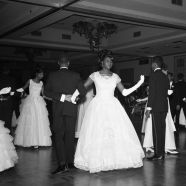
Harry Adams. Debutantes, Los Angeles, September 1968. Courtesy the Harry Adams Collection
Share This
Print This
Email This
Interview
South Writ Large interviewed Taylor Bythewood-Porter, Assistant Curator at California African American Museum, about the exhibition, Rights and Rituals: The Making of African American Debutante Culture, which is on view through February 27, 2022.
Text Panel from CCAM’s Exhibition (“Shining Newness to Society”)
The Eurocentric ideal of feminine beauty that dominated magazines and newspapers in the late 1800s was a woman with both style and grace—a waterfall of long curly hair, an hourglass figure, and a pale complexion. Female fashion in this period was delicate yet restrictive: long, full skirts; corsets that inhibited movement; and elaborate hairstyles that took great effort to keep in place. This ideal shaped the image of the debutante and mirrored the control families exerted over daughters as they matured, particularly regarding courtship. Limiting their interactions with the opposite sex and employing chaperones increased a debutante’s marriageable value, which was derived in part from her perceived purity.
While white women’s beauty standards were reinforced throughout print and popular culture, there were few representations of Black female beauty. The images of Black women that did exist were often caricatures. Due in large part to a history of degradation and sexual abuse during enslavement, African American girls moved instantly from child status to either the asexual Mammy—unattractive and matronly—or the sexually threatening Jezebel—often light-skinned and promiscuous. Black women’s social clubs sought to counter these dual stereotypes by presenting girls as both beautiful and innocent.
When African American debutante groups started holding cotillions in the 1890s, Black newspapers eagerly covered the events in order to present a positive image of young Black women as elegant ladies. Articles in the California Eagle as early as 1915 highlighted the physical attractiveness of the debutante using descriptions such as “a picture of loveliness.” Careful, however, not to overemphasize their desirability, the press also took note of the debs’ “dainty” attire and, later, their white ball gowns, as that became the fashion. Through full-page spreads featuring large pictures and accompanying texts, which began to appear in the 1940s, newspapers such as the Los Angeles Sentinel documented young Black women’s coming of age and offered a new female paradigm. The African American debutante challenged the institutionalized idea that Black women were lacking in grace and innocence, making her a source of racial pride and a precursor of expanding conversations on Black women’s representation.
***
Interview with Taylor Bythewood-Porter
How did you come up with the idea for this exhibit?
I’ve always been fascinated by debutante culture and social clubs, especially being born and raised in New Jersey. Growing up on the East Coast in a place that had colonial roots, traditions and rituals were ever-present in groups such as the Order of the Eastern Star, Daughters of the American Revolution, or the Freemasons. I always felt like those groups are very performative, only presenting to the public certain aspects of the organization, which can seem like an elitist system at times and harbors negative stereotypes. However, within the exhibition Rights and Rituals: The Making of African American Debutante Culture, I found that African American debutante organizations were so much more and have a deep history of uplifting young Black women by providing access to education and economic mobility through mentorship. Though they are performing social graces and curtsying, they are determined to assist in racial and gender equality. It’s very inspiring when you think about it.
- Harry Adams. Debutantes, Los Angeles, September 1968. Courtesy the Harry Adams Collection
- McLain’s Photo Service. Warner R. Wright introducing his daughter, Brenda, at Cotillion at the Beverly Hilton Hotel, October 19, 1957. Courtesy the USC Digital Library, Library Exhibits Collection
- Harry Adams. Debutante at Los Angeles Links Ball, Los Angeles, November 1964. Courtesy the Harry Adams Collection
- 20th Century Onyx Club, Oxnard, 1964 debutantes (first row, left to right: Vickey Banks, Betty Marie Decquir; second row L to R: Gwendolyn Jean Tatum, Claudette Marie Lyghts, Donna Jo Cottry; third row L to R: Mildred Virginia White, Deidre Gail Wilkes, and Martha Velverlee Cameron; also introduced was Patricia Ann Hudson), 1964. Courtesy the Black Gold Cooperative Library System
- Afro Newspaper/Gado. Nat King Cole and former United States President John F. Kennedy greeting an African-American debutante during a cotillion, Beverly Hills, California, November 18, 1961. Courtesy Getty Images
Were you inspired by other public exhibits on related topics?
Funnily enough, there has never really been an exhibition truly focused on African American debutantes. Even researching the show, there’s not a lot of information out there specifically focused on Black debs. There are of course books, essays, and even shows focused on more traditional European debutante culture—those things can be seen in episodes of the Gilmore Girls and more recently Bridgerton. For this exhibition, I was making notes on the more traditional ideas of debutante culture but I was also reading a lot of works about Black upper-class society, like Our Kind of People: Inside America’s Black Upper Class or An Introduction to Polite Society: The Significance of African-American Cotillions in the Mid-Twentieth Century, and noticing the overlaps within various movements in American history: the racial uplift movement, women’s club movement, civil rights, educational reform, second-wave feminism. It was all fascinating to gain a better understanding of how Black debutante culture differed from the more customary view of debs, as Black debutantes challenged institutionalized stereotypes that limited the role and potential of Black girls. The research done for this exhibition helps create a fuller picture of the organizations that participate in these rites of passage.
Did you contemplate different designs—thematically or chronologically—when planning the exhibit?
Just a bit, but then things fell into place nicely. Within the research phase of the exhibition, I knew I wanted to focus on the core pillars of African American debutante culture, which are education, family, and philanthropy. While working with Julia Luke Design, they really took to heart the narrative that I was putting together and designed such a beautiful show that reflects the time period and the essence of the debutante.
Do you have a favorite story or part of the exhibit?
Oh, it’s hard to choose just one! I feel like there are a lot of wonderful stories within each photograph and each object in the show. But one part that I like to highlight is the debutante dresses. We have a dress from one of the first cotillions hosted by the Los Angeles Chapter of The Links, Incorporated from 1953 that was held at Ciro’s Nightclub on Sunset (which is now the Comedy Store). We also have a dress from 1967 and a more contemporary gown from 2019. It’s really exciting to see how the style of the dresses changed over the decades, and I’m so grateful that the women kept their dresses.
What has been the popular response to this exhibit?
This exhibition has definitely brought a lot of happy tears to people’s faces, especially when people come to the show and recognize family members who have passed or even see photographs of familiar faces they haven’t seen in years. Those are the things that really make my job as a curator heartwarming, to be able to bring that to people; moreover I think for a lot of women it brings a sense of pride. Though the exhibition is focused on female empowerment, it’s also a celebration of family and community.
Were there stories or artifacts that you wanted to include but were not able to, due to space constraints or issues with access?
I would love to have included more personal items from lenders. However, I find that the further back in time one goes when sourcing objects for exhibitions, especially within the African American community, a lot of those moments and ephemera aren’t saved. As a curator, I cannot stress enough how important it is to save those objects and pass down that information to future generations. Being able to look back and see the growth of our family members, to have a better understanding of generational uplift and sacrifice as we are really not that far away from the years of enslavement, can offer a sense of pride and accomplishment, as we are our ancestors.
If you could design the exhibit again from scratch, is there anything you would have done differently?
Other than including more physical objects, I wouldn’t. The exhibition design is so lovely and elegant, the CAAM team and our vendors did such a great job. I’m truly grateful to be working alongside this creative bunch.
If this exhibit could travel, where would you like it to appear (if you had unlimited funding)?
If this exhibition could travel anywhere, I would love to expand it and really explore African American debutante culture across the country, highlighting the East Coast or the Southern traditions. The focus of this show is how debutante organizations, which were mainly established in the eastern and southern states, migrated to California. However, a more inclusive show could include details on the first documented debutante balls, which appeared in the New-Jersey Gazette in 1778, and about the earliest record of an African American social organization holding a ball in 1895 with the Original Illinois Club in New Orleans. African American debutante culture has evolved and offers specific traditions depending on the time period or location, and being able to explore those things in spaces such as the National Museum of African American History and Culture or the Metropolitan Museum of Art to document the fashion would be magnificent.
What new projects are you working on for the California African American Museum?
Right now I’m still thinking about the areas that I’m interested in for future shows, which tend to be along the lines of women and gender equality with a focus on the Black experience. Currently, at CAAM I am assisting on an exhibition that will be a part of the Getty Pacific Standard Time Art + Science Initiative, World Without End: The George Washington Carver Project, curated by Cameron Shaw and Yael Lipshultz. Right now we are still very much in the research phase and I can say that Carver was much more than meets the eye. He was truly a great man with a vision for the future that included sustainability and agency for all people, especially within the Black community.
Is there another new exhibit at your museum or elsewhere that you might recommend?
At CAAM we have a lot of amazing shows currently on view: April Bey: Atlantica, The Gilda Region; LaToya Ruby Frazier: The Last Cruze; Sanford Biggers: Codeswitch; Cassandra Press: An unfolding, Sanford Biggers and the Amistad Research Center; and Rights and Rituals. There are also a lot of great shows happening around town. The Lorna Simpson show at Hauser & Wirth is definitely something that I recommend people see, which should be up through December, and Band of Vices is always a great gallery that supports artists of color. Right now there is a lot of amazing works on view in Los Angeles by talented artists of color and they are all worth a look.







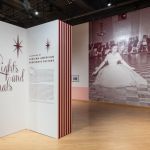
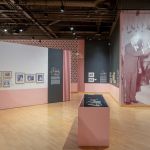
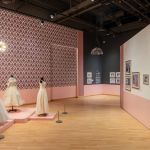
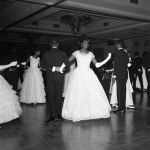
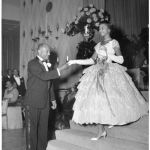


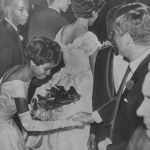
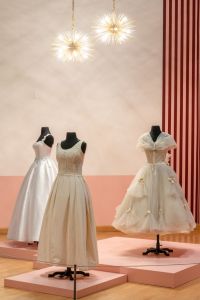
So cool! Definitely a subject I’ve never seen any info on before!
Very nice to see this article on the history of the Black debutants. My first introduction to the subject was when my husband, I and our tiny children lived next door to an African American family in North Oakland from 1966-67. The 20 something daughter, Angie, showed me her photo album one day and there she was in her debutant dress at the ball. I found it so fascinating because in the Berkeley culture of the time (Tom and i were students) formal gatherings were no longer pursued. I learned that day how important elegance was to their family and the pride they had in pursuing it as well as interesting careers. Angie’s brother hoped to be an architect.